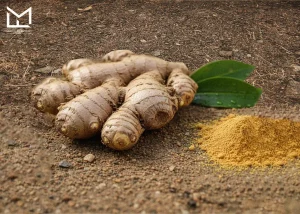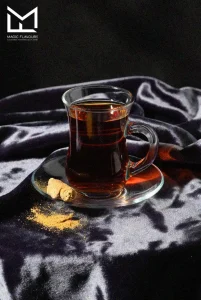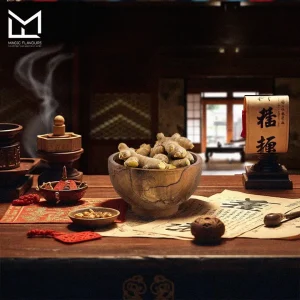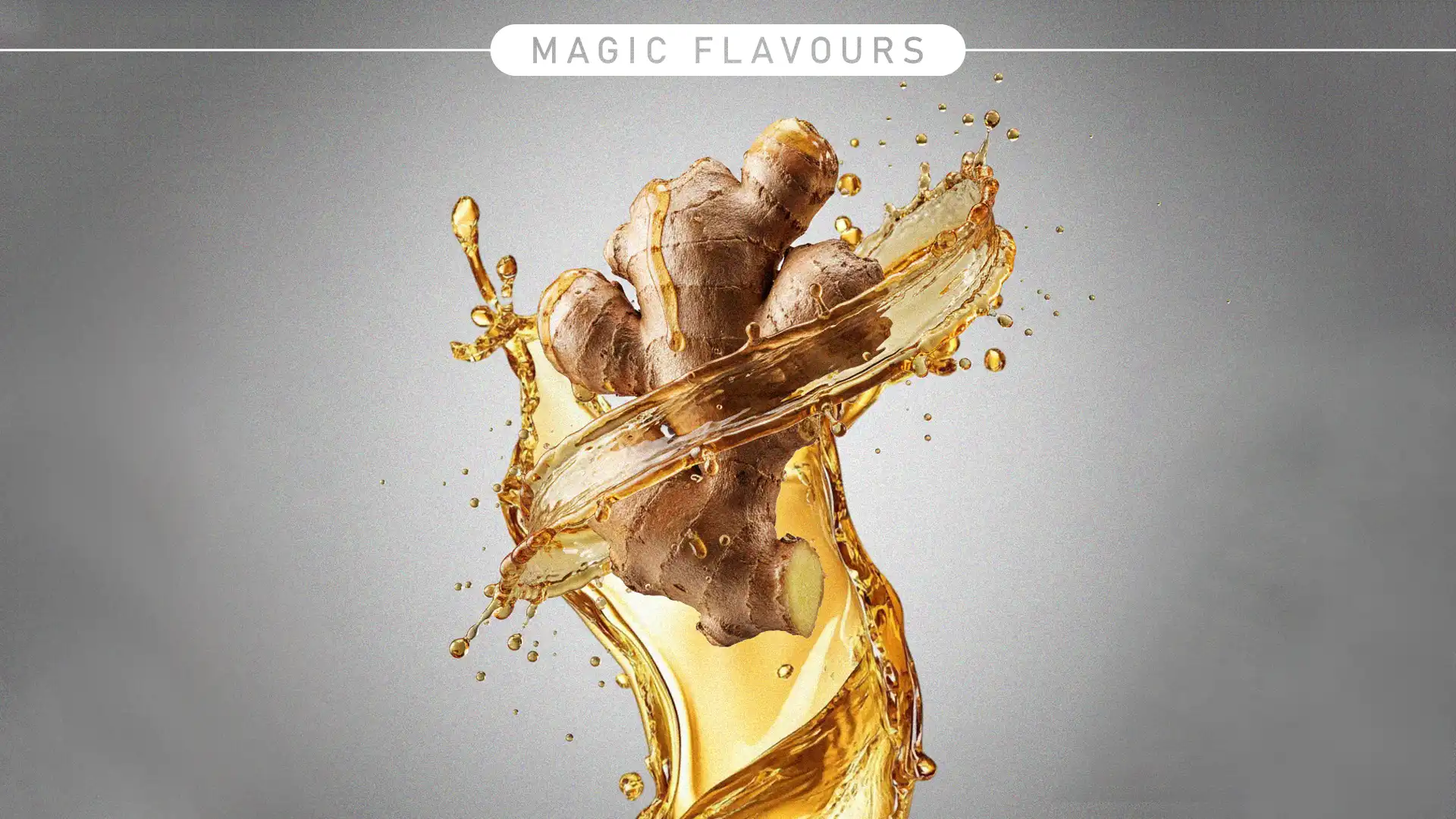1. Introduction to Ginger Flavor
What Is Ginger?
Ginger is a flowering plant native to Southeast Asia. People cultivate it mainly for its spicy rhizome. The rhizome, often called ginger root, grows underground and resembles a knotted, pale brown tuber. It contains aromatic oils and compounds that give it a sharp, warm taste and strong fragrance.
Ginger belongs to the Zingiberaceae family, which includes turmeric and cardamom. Its flavor stands out because of compounds like gingerol and shogaol. These compounds stimulate the palate and add depth to both sweet and savory dishes.
You can find ginger in many forms—fresh, dried, powdered, pickled, or candied. Each form offers a slightly different taste and intensity. Because of its versatility, ginger remains a staple in kitchens around the world.
Historical Use of Ginger in Cuisine

Ancient Chinese and Indian texts mention ginger as early as 500 BCE. People used it to treat ailments and enhance food flavor. Over time, ginger became a prized spice in trade routes across Asia and Europe.
In medieval Europe, ginger was rare and expensive. Cooks used it in sauces, meats, and even desserts like gingerbread. Its warming properties made it popular during cold seasons.
Arab traders helped spread ginger to Africa and the Mediterranean. Eventually, colonial powers cultivated it in the Caribbean and West Africa. Today, ginger plays a vital role in global culinary traditions.
Overview of Ginger Flavor Profile
Ginger delivers a bold, spicy kick with a hint of sweetness. Specifically, its heat comes from gingerol, which activates taste receptors quickly. Moreover, as ginger ages or dries, gingerol transforms into shogaol, which tastes even hotter. Fresh ginger, for example, tastes bright and citrusy with a peppery bite, while dried ginger offers a deeper, earthier flavor with less moisture. Finally, powdered ginger feels warm and mellow, making it ideal for baking.
The flavor changes depending on how you cook it. Boiling softens its sharpness, while frying intensifies its aroma. Because of this, chefs use ginger to build layers of taste in many dishes.
2. Chemical Composition and Notes of Ginger Flavor
Key Compounds Responsible for Ginger Flavor
Ginger’s flavor comes from several active compounds. Gingerol is the most prominent and gives fresh ginger its spicy bite. Shogaol and zingerone form when ginger is dried or cooked.
Each compound affects taste differently. Gingerol feels sharp and pungent, while shogaol tastes hotter and more intense. Zingerone adds a sweet, warm note often found in baked goods.
These compounds also influence aroma. Gingerol smells fresh and citrusy, while shogaol has a deeper scent. Together, they create ginger’s signature flavor balance.
How Processing Affects Ginger’s Taste
Processing changes ginger’s chemical makeup. For example, drying converts gingerol into shogaol, which increases heat, while cooking breaks down compounds and softens the flavor. Specifically, boiling makes ginger taste milder and less sharp, whereas roasting intensifies its earthy notes and adds depth. Additionally, fermenting or pickling introduces sourness and complexity. Ultimately, each method brings out different qualities, so chefs choose the form based on the dish’s needs. Therefore, understanding these changes helps control flavor in cooking.
Fresh vs. Dried vs. Ground Ginger Flavor

Fresh ginger tastes bright and peppery. For example, it works well in stir-fries, marinades, and teas, and its juicy texture adds moisture and zing. In contrast, dried ginger feels hotter and more concentrated, making it well suited for stews, curries, and spice blends. However, its fibrous texture makes it less ideal for quick cooking. Meanwhile, ground ginger offers warmth and subtle sweetness, so bakers use it in cookies, cakes, and pies. Moreover, its fine texture blends easily into dry mixes.
3. Culinary Applications of Ginger Flavor
Ginger Flavor in Savory Dishes
Ginger adds depth and heat to savory meals. Chefs often use it in stir-fries, soups, and marinades. Its sharp flavor cuts through rich meats and oily sauces.
In Asian cuisine, ginger pairs well with garlic and soy sauce. It enhances the taste of chicken, beef, and seafood. Many Indian curries begin with sautéed ginger and onions.
Middle Eastern dishes also feature ginger in spice blends. It balances earthy flavors like cumin and coriander. Because of its versatility, ginger fits into many savory styles.
Ginger Flavor in Sweet Recipes
Ginger brings warmth and spice to desserts. Bakers use ground ginger in cookies, cakes, and muffins. Its sweet heat complements molasses, cinnamon, and nutmeg.
Candied ginger adds texture and zing to baked goods. It works well in fruit pies and chocolate treats. Even ice cream benefits from its bold flavor.
Gingerbread is a classic example of sweet ginger use. Its rich taste comes from a mix of spices and syrup. This dessert remains popular during holidays and winter months.
Ginger Flavor in Beverages (Tea, Ale, Cocktails)

Ginger tea soothes and refreshes with a spicy kick. For instance, boiling fresh ginger releases oils and flavor into water, and many people add lemon or honey for balance. Similarly, ginger ale offers a fizzy, sweet version of the root, blending ginger extract with sugar and carbonation. As a result, this drink pairs well with meals or serves as a mixer.
Furthermore, cocktails often feature ginger for its bold taste, as bartenders use ginger syrup or muddled root in recipes. Therefore, it adds complexity to drinks like the Moscow Mule or Dark ‘n’ Stormy.
Regional Cuisines Featuring Ginger Flavor
Chinese cuisine uses ginger in stir-fries and broths. It balances salty sauces and enhances meat flavors. Fresh slices often appear in hot pots and dumplings.
Indian cooking relies on ginger in spice pastes. It blends with garlic, chili, and turmeric in curries. Ginger also flavors chai, a popular spiced tea.
Caribbean dishes include ginger in jerk seasoning. It adds heat and aroma to grilled meats. In Africa, ginger appears in stews and herbal drinks.
4. Health Benefits and Medicinal Uses of Ginger Flavor
Anti-inflammatory and Digestive Properties

Ginger helps reduce inflammation in the body. Its compounds like gingerol block enzymes that trigger swelling. This makes it useful for joint pain and muscle soreness.
Ginger also supports digestion. It stimulates saliva and bile production, aiding food breakdown. Many people use it to relieve bloating and nausea.
Doctors often recommend ginger for morning sickness. It calms the stomach and eases discomfort quickly. Because of this, it’s popular among pregnant people and travelers.
Ginger in Traditional Medicine
Traditional Chinese medicine values ginger for its warming nature. Practitioners use it to treat colds, coughs, and fatigue. They believe it restores balance and boosts energy.
In Ayurveda, ginger is called “the universal medicine.” It treats digestive issues, respiratory problems, and circulation. Healers often mix it with honey or turmeric for added effect.
African and Middle Eastern remedies also include ginger. People use it in teas and poultices for pain relief. Its long history shows how cultures trust its healing power.
Modern Scientific Findings about the Ginger Flavor
Recent studies confirm ginger’s anti-inflammatory effects. Researchers found it reduces pain in arthritis patients. It works as well as some over-the-counter drugs.
Scientists also studied ginger’s impact on nausea. Clinical trials show it helps with chemotherapy and surgery recovery. Its natural compounds soothe the stomach without side effects.
Ginger may also support heart health. Some evidence links it to lower blood pressure and cholesterol. While research continues, early results look promising.
5. Pairing Ginger with Other Flavors
Complementary Spices and Ingredients
Ginger pairs well with garlic, chili, and lemongrass. These ingredients share bold flavors and enhance savory dishes. Together, they create depth and complexity in stir-fries and soups.
Sweet spices like cinnamon and nutmeg also match ginger. They soften its heat and add warmth to baked goods. This blend works well in cookies, cakes, and holiday treats.
Citrus fruits balance ginger’s spice with bright acidity. Lemon, lime, and orange lift its flavor in drinks and sauces. Honey and maple syrup round out the taste with natural sweetness.
Ginger Flavor in Fusion Cuisine
Fusion cuisine uses ginger to bridge global flavors. For example, chefs mix it with soy sauce, olive oil, or coconut milk, which creates bold marinades and dressings with layered taste. Additionally, ginger works in tacos with Asian slaw or spicy aioli, as it adds heat and freshness to Latin-inspired dishes. Furthermore, even pasta sauces benefit from a touch of grated ginger.
Desserts also explore fusion with ginger. Try ginger with mango, matcha, or dark chocolate. These combinations surprise the palate and feel modern.
Balancing Ginger’s Heat and Sweetness
To balance ginger’s heat, first use sweet or creamy elements. For example, honey, sugar, or fruit mellow its sharpness, while yogurt and coconut milk soften the spice in sauces. Additionally, acidic ingredients like lemon or vinegar help control intensity, as they brighten the flavor and keep it from overpowering. Consequently, this works well in dressings and pickled dishes.
Use small amounts to start, then adjust to taste. Cooking ginger longer also reduces its bite. With practice, you can fine-tune its role in any recipe.
6. Buying, Storing, and Preparing Ginger
How to Choose Fresh Ginger
Choose ginger with firm, smooth skin and a strong aroma. Avoid pieces that feel soft, wrinkled, or moldy. Fresh ginger should snap easily when bent.
Look for plump roots with few knobs or cuts. Thin skin means the ginger is young and tender. Older ginger has thicker skin and stronger flavor.
Smell the ginger before buying if possible. A fresh, spicy scent signals good quality. With these tips, you’ll pick the best ginger every time.
Storage Tips for Longevity
Store fresh ginger in the fridge to keep it crisp. Wrap it in paper towels and place it in a bag. This prevents moisture buildup and mold.
For longer storage, freeze ginger in small pieces. Peel and slice it before freezing for easy use. Frozen ginger grates well and keeps its flavor.
You can also store ginger in vinegar or alcohol. This method preserves it and adds tangy notes. Choose the storage style that fits your cooking habits.
Preparation Techniques (Peeling, Grating, Infusing)
Peel ginger with a spoon to avoid waste. Scrape gently to remove the thin outer skin. This method works better than using a knife.
Grate ginger for quick flavor release. Use a microplane or fine grater for best results. Grated ginger blends easily into sauces and marinades.
To infuse ginger, slice it and simmer in liquid. Add it to tea, broth, or syrup for bold taste. Strain before serving to keep the texture smooth.
7. Ginger in Non-Culinary Products
in Perfumes and Aromatherapy
Ginger adds warmth and spice to many perfumes. Its scent feels fresh, energizing, and slightly woody. Perfumers use it to create bold and uplifting blends.
In aromatherapy, ginger oil boosts mood and focus. People diffuse it to fight fatigue and mental fog. Its sharp aroma stimulates the senses and clears the mind.
Ginger also blends well with citrus and floral oils. This makes it ideal for both masculine and feminine scents. Its versatility keeps it popular in wellness routines.
Ginger in Skincare and Wellness Products
Ginger helps improve skin tone and texture. Its antioxidants fight free radicals and reduce signs of aging. Many creams and masks include ginger extract for this reason.
Ginger also boosts circulation when applied topically. It warms the skin and promotes a healthy glow. This effect makes it useful in massage oils and scrubs.
Wellness brands use ginger in detox products. It appears in bath salts, body wraps, and herbal compresses. Its natural heat and scent enhance relaxation and renewal.
8. Cultural and Symbolic Significance
Ginger Flavor in Folklore and Symbolism

Many cultures view ginger as a symbol of vitality and warmth. In fact, its fiery taste often represents energy, courage, and protection, and people believe it wards off illness and negative spirits. Specifically, in Chinese folklore, ginger restores balance and inner heat, playing a role in healing and spiritual harmony.
As a result, families use it to strengthen both the body and mind. Likewise, Western traditions link ginger to strength and resilience, as its bold flavor reflects bold character and emotional warmth. Therefore, this symbolism appears in stories, remedies, and seasonal rituals.
Ginger in Festivals and Traditions
Ginger features prominently in winter festivals and holidays. People bake gingerbread cookies and houses to celebrate warmth. These treats bring comfort and joy during cold months.
In India, ginger tea is shared during monsoon season. It warms the body and strengthens social bonds. Families gather and sip together as part of tradition.
Asian New Year celebrations include ginger in meals. It symbolizes health, renewal, and good fortune. These customs show ginger’s deep cultural importance across the world.
9. Conclusion
Recap of Ginger’s Versatility
Ginger stands out as one of the most adaptable ingredients. For example, it works in savory meals, sweet treats, and refreshing drinks, and its flavor shifts with form—fresh, dried, or ground. Furthermore, beyond cooking, ginger plays a role in wellness and beauty, appearing in teas, perfumes, and skincare products.
Indeed, cultures worldwide value its healing and symbolic power. From ancient remedies to modern recipes, ginger remains essential. Moreover, its bold taste and health benefits make it a kitchen favorite. Ultimately, this root continues to inspire chefs, healers, and creators alike.
Final Thoughts on Embracing Ginger Flavor
Embracing ginger means welcoming warmth, spice, and depth. It challenges the palate while offering comfort and balance. With a little care, anyone can master its bold character.
First, try ginger in new dishes or wellness routines. Then, explore its forms and pairings to unlock fresh ideas. Next, let its flavor guide you toward creativity and nourishment. Indeed, ginger isn’t just a spice—it’s a story of taste and tradition. Therefore, celebrate its journey and make it part of your own. Ultimately, your kitchen will thank you with every fragrant, fiery bite.
